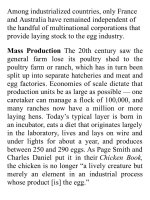On food and cooking the science and lore of the kitchen ( PDFDrive ) 99
Bạn đang xem bản rút gọn của tài liệu. Xem và tải ngay bản đầy đủ của tài liệu tại đây (168.52 KB, 2 trang )
L. brevis, for example — as well asL.
plantarumfrompickledvegetables,andthe
intestinal nativeL.acidophilus,dotakeup
residence in us. Particular strains of these
bacteriavariouslyadheretoandshieldthe
intestinal wall, secrete antibacterial
compounds, boost the body’s immune
response to particular disease microbes,
dismantle cholesterol and cholesterolconsuming bile acids, and reduce the
productionofpotentialcarcinogens.
These activities may not amount to
prolongingouryouth,butthey’recertainly
desirable! Increasingly, manufacturers are
adding “probiotic” Lactobacilli and even
Bifidobacteria to their cultured milk
products, and note that fact on the label.
Such products, approximations of the
originalfermentedmilksthatcontainedan
evenmorediversebacterialflora,allowus
to plant our inner gardens with the most
companionable microbes we’re currently
awareof.
Yogurtremainedanexoticcuriosityin
Europeuntilearlyinthe20thcentury,when
theNobelPrize–winningimmunologistIlya
Metchnikovconnectedthelongevityof
certaingroupsinBulgaria,Russia,France,
andtheUnitedStateswiththeirconsumption
offermentedmilks,whichhetheorizedwould
acidifythedigestivetractandprevent
pathogenicbacteriafromgrowing(seebox,p.
47).Factory-scaleproductionandmilder
yogurtsflavoredwithfruitweredevelopedin
thelate1920s,andbroaderpopularitycamein
the1960swithSwissimprovementsinthe
inclusionofflavorsandfruitsandtheFrench
developmentofastable,creamystirred
version.
The Yogurt Symbiosis By contrast to the
complex and variable flora of traditional
yogurts, the industrial version is reduced to
the essentials. Standard yogurt contains just









